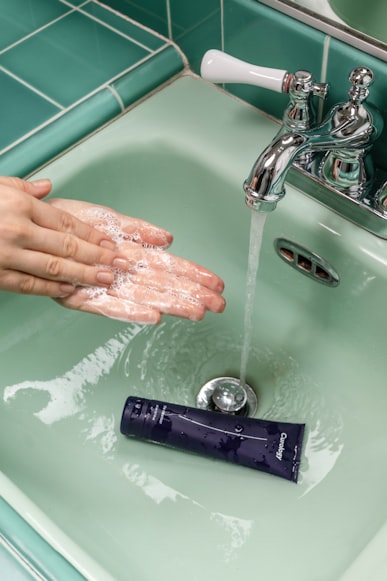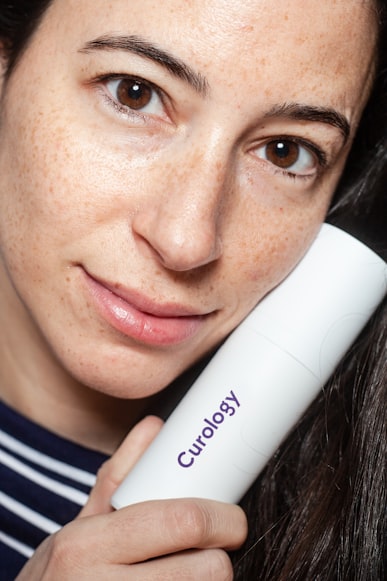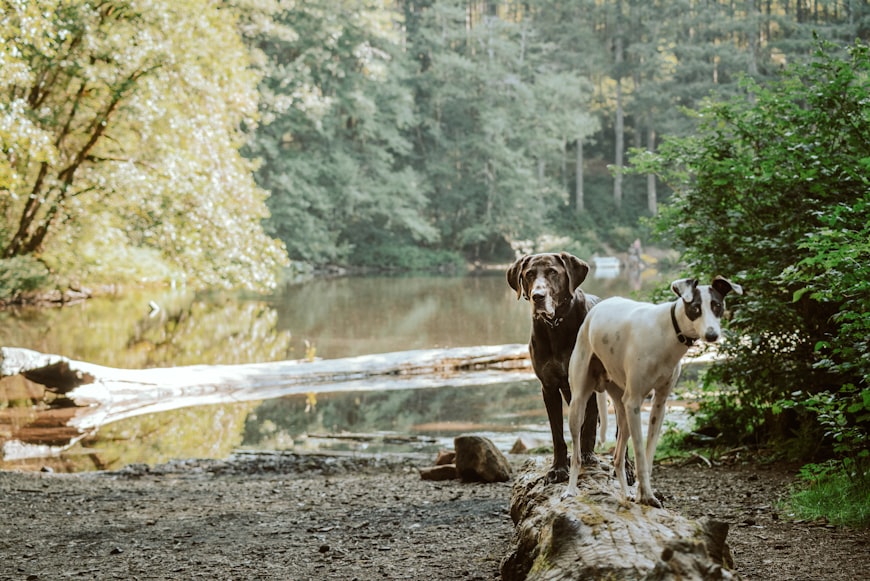I. Introduction

A. Defining Dry Skin in Dogs
Dry skin in dogs, also known as xerosis, is a common skin condition characterized by reduced moisture and oil production, leading to a rough, flaky, and often itchy epidermis. Unlike transient dryness, which can be caused by temporary factors like bathing or cold weather, dry skin is a chronic condition that persists over time.
B. Causes of Dry Skin in Dogs
The causes of dry skin in dogs are multifaceted and can include:
1. Environmental Factors:
- Low humidity: Dry air, especially during winter months, can lead to evaporation of moisture from the skin.
- Excessive bathing: Frequent bathing can strip the skin of its natural oils, resulting in dryness and irritation.
- Sun exposure: Prolonged exposure to ultraviolet (UV) rays can damage the skin’s barrier and reduce oil production.
2. Dietary Deficiencies:
- Essential fatty acids: A lack of omega-3 and omega-6 fatty acids in the diet can lead to skin inflammation and dryness.
- Essential vitamins: Deficiencies in vitamins A, B, and E can impair skin health and contribute to dryness.
3. Underlying Medical Conditions:
- Allergies: Allergies to food, environmental allergens, or parasites can cause inflammation that leads to dry, itchy skin.
- Hormonal imbalances: Disorders of the thyroid, adrenal, or reproductive glands can disrupt oil production and cause dry skin.
- Skin infections: Bacterial or yeast infections can damage the skin’s barrier and reduce its ability to retain moisture.
- Skin disorders: Certain skin disorders, such as atopic dermatitis or autoimmune diseases, can cause chronic dryness and inflammation.
4. Age:
Older dogs are more prone to dry skin due to reduced oil production and other age-related changes.
5. Breed Predisposition:
Some dog breeds, such as Bulldogs, Pugs, and West Highland White Terriers, are particularly susceptible to dry skin.
Symptoms of Dry Skin in Dogs
The signs of dry skin in dogs can vary depending on the underlying cause and severity of the condition. Common symptoms include:
- Flaky, dry skin: The skin may appear dull, with patches of white or grey scales.
- Itchiness: Dogs may scratch or bite at the affected areas, leading to irritation and secondary infections.
- Redness: Inflammation may cause the skin to become red and sore.
- Hair loss: Chronic dryness can lead to hair loss or thinning.
- Crusting: Severe cases may develop crusty or scabby areas on the skin.
- Secondary infections: Dry skin can make dogs more susceptible to bacterial or yeast infections, which can further worsen the condition.
II. Benefits of Lotions for Dry Skin

Dry skin is a common condition characterized by a lack of sufficient moisture in the skin’s outermost layer. This can lead to a variety of symptoms, including itching, irritation, redness, and flaking. While there are numerous causes of dry skin, the underlying issue is often a compromised skin barrier, which allows moisture to escape and irritants to enter.
Using a lotion specifically designed for dry skin can help to alleviate these symptoms and restore the skin’s moisture balance. Lotions contain a combination of ingredients that work together to moisturize, hydrate, and protect the skin.
A. Moisturizing and Hydrating the Skin
Lotions contain humectants, which are ingredients that attract and retain moisture in the skin. Common humectants include glycerin, hyaluronic acid, and urea. These ingredients work by drawing water from the environment or the deeper layers of the skin into the outermost layer, where it can help to soften and smooth the skin’s texture.
In addition to humectants, lotions also contain emollients, which are ingredients that help to soften and smooth the skin’s surface. Emollients fill in the gaps between skin cells, creating a more even and less flaky texture. Common emollients include ceramides, fatty acids, and silicones.
B. Reducing Itching and Irritation
Dry skin is often accompanied by itching and irritation. Lotions can help to relieve these symptoms by reducing inflammation and protecting the skin from further damage.
Some lotions contain anti-inflammatory ingredients, such as aloe vera or oatmeal, which can help to soothe and calm the skin. Others contain barrier-protecting ingredients, such as zinc oxide or petrolatum, which create a protective layer on the skin’s surface to prevent irritants from entering.
Choosing the Right Lotion for Dry Skin
When choosing a lotion for dry skin, it is important to consider the specific needs of your skin. If you have very dry skin, you will likely need a lotion that is thicker and more emollient. If you have sensitive skin, you will need to avoid lotions that contain harsh or irritating ingredients.
It is also important to note that some lotions may contain ingredients that can be harmful to certain skin types. For example, people with acne should avoid lotions that contain oils or fragrances, as these can clog pores and worsen acne.
If you are unsure about which lotion is right for you, consult with a dermatologist. They can help you to assess your skin type and recommend a lotion that will provide the best results.
Tips for Using Lotions for Dry Skin
- Apply lotion to clean, damp skin. This will help the lotion to absorb more easily.
- Massage the lotion into your skin until it is fully absorbed.
- Apply lotion liberally and as often as needed to keep your skin hydrated.
- Avoid using lotions that contain harsh or irritating ingredients, such as alcohol, dyes, or fragrances.
- If you experience any irritation or allergic reaction after using a lotion, discontinue use and consult with a dermatologist.
Conclusion
Lotions are an effective way to moisturize and hydrate dry skin, reducing itching and irritation. By choosing the right lotion for your skin type and following the tips above, you can help to keep your skin healthy and comfortable.
III. Types of Lotions for Dry Skin

Dry skin is a common skin condition that can be caused by various factors, including genetics, age, climate, and certain medical conditions. It is characterized by flaky, itchy, and uncomfortable skin. Moisturizing regularly with the right lotion is crucial to alleviate these symptoms and maintain skin health.
There are numerous types of lotions available in the market, each formulated with different ingredients and purposes. Choosing the most suitable lotion for dry skin requires understanding the various options and their key features.
A. Fragrance-Free Lotions
Fragrance-free lotions are an excellent choice for individuals with sensitive skin or allergies. They do not contain any added fragrances, dyes, or perfumes, which can irritate and trigger allergic reactions. Fragrance-free lotions are gentle on the skin and provide pure hydration without causing irritation.
B. Hypoallergenic Lotions
Hypoallergenic lotions are specifically designed to minimize the risk of allergic reactions. They are formulated with a limited number of ingredients, typically those that are known to be gentle on the skin. Hypoallergenic lotions are ideal for individuals with extremely sensitive skin or those who experience skin allergies easily.
C. Emollients and Humectants
Emollients and humectants are two essential ingredients for dry skin lotions. Emollients are oil-based ingredients that create a barrier on the skin, trapping moisture and preventing it from evaporating. Humectants, on the other hand, are water-based ingredients that draw moisture from the air and the skin’s deeper layers to the surface.
Types of Emollients
- Ceramides: Natural lipids that help strengthen the skin’s barrier.
- Glycerin: A humectant that draws moisture from the air.
- Hyaluronic acid: A powerful moisturizer that holds up to 1000 times its weight in water.
- Lanolin: A waxy substance derived from sheep’s wool that provides long-lasting hydration.
- Shea butter: A rich emollient that nourishes and softens the skin.
Types of Humectants
- Glycerin: A common humectant that is gentle and effective.
- Hyaluronic acid: A highly effective humectant that plumps and hydrates the skin.
- Urea: A natural humectant that gently exfoliates and improves the skin’s ability to retain moisture.
- Sodium PCA: A humectant that binds water to the skin.
Choosing the Right Lotion
The best lotion for you will depend on your individual skin type and sensitivities. Consider the following factors when choosing a dry skin lotion:
- Ingredients: Look for lotions containing emollients and humectants, such as ceramides, glycerin, hyaluronic acid, lanolin, and shea butter.
- Hypoallergenic: If you have sensitive skin, opt for a hypoallergenic lotion formulated with limited ingredients.
- Fragrance-free: Choose fragrance-free lotions to avoid skin irritation and allergic reactions.
- Consistency: Thicker, emollient-rich lotions are more suitable for severe dryness, while lighter, humectant-based lotions are better for milder dryness.
- Price: Lotions vary in price depending on their quality and ingredients. Choose a lotion that fits your budget and meets your skin’s needs.
Conclusion
Moisturizing regularly with an appropriate lotion is essential for dry skin care. Fragrance-free, hypoallergenic, emollient, and humectant lotions offer various options to cater to different skin types and sensitivities. By understanding the key ingredients and features of these lotions, you can make an informed choice and effectively soothe, nourish, and protect your dry skin.
IV. Choosing the Right Lotion

Maintaining the health and vitality of your dog’s skin is crucial for their overall well-being. One important aspect of this is selecting the right lotion to address their specific needs. Here are some key factors to consider when choosing a lotion for your canine friend:
A. Consulting with a Veterinarian
The first step in choosing the right lotion for your dog is to consult with a veterinarian. They can assess your dog’s skin condition, identify any underlying issues, and provide personalized recommendations based on their age, breed, and individual sensitivities. A veterinarian can also rule out any potential allergic reactions or adverse effects from certain ingredients.
B. Considering the Dog’s Age, Breed, and Skin Sensitivity
1. Age: Puppies and senior dogs have different skin needs. Puppies generally have more delicate skin, while senior dogs may experience dry or flaky skin due to aging. Choose a lotion that is specifically formulated for your dog’s age group.
2. Breed: Certain breeds, such as Bulldogs, Pugs, and Shar-Peis, are prone to skin folds and wrinkles. These areas can trap moisture and bacteria, making them susceptible to infections. Look for lotions that contain anti-inflammatory and antimicrobial ingredients to prevent these issues.
3. Skin Sensitivity: Some dogs have sensitive skin that may react to harsh ingredients or fragrances. If your dog has any known allergies or skin sensitivities, choose a hypoallergenic lotion that is free from potentially irritating components.
Additional Tips for Choosing the Right Lotion:
- Read the Ingredients List: Pay attention to the ingredients in the lotion. Avoid products containing harsh chemicals, fragrances, or alcohols that can irritate your dog’s skin.
- Look for Natural and Soothing Ingredients: Choose lotions that contain natural and soothing ingredients, such as aloe vera, oatmeal, or coconut oil. These ingredients can help calm and moisturize your dog’s skin without causing irritation.
- Consider the Texture and Consistency: The texture and consistency of the lotion should be appropriate for your dog’s skin type. If your dog has dry skin, opt for a thicker, emollient cream. For oily skin, a lighter lotion or gel may be more suitable.
- Test the Lotion: Before applying the lotion all over your dog’s body, do a patch test on a small area to ensure they do not have any adverse reactions. Apply a small amount of the lotion to an area of skin that is not likely to be licked or rubbed, and wait for a few hours to see if there are any signs of irritation.
- Apply the Lotion Regularly: To maintain the health of your dog’s skin, apply the lotion as directed by your veterinarian or according to the manufacturer’s instructions. Regular application will help keep your dog’s skin moisturized and protected.
By following these guidelines and consulting with your veterinarian, you can choose the right lotion that meets your dog’s unique needs. A healthy and well-moisturized coat can contribute to your dog’s overall comfort, well-being, and quality of life.
V. Application Instructions

Maintaining a healthy and lustrous coat in dogs requires meticulous grooming and skincare practices. One crucial aspect of canine skincare is the proper application of topical lotions and treatments. To achieve optimal results and avoid potential adverse reactions, it is essential to follow the designated application instructions carefully.
A. Bathing the Dog Prior to Application
Bathing your dog before applying any lotion is a critical step to ensure optimal efficacy. A clean coat free from dirt, debris, and natural oils allows the lotion to penetrate deeply into the skin, maximizing its absorption and therapeutic benefits. Use a gentle, dog-specific shampoo and avoid using human products, as they can disrupt the dog’s natural pH balance. After thoroughly rinsing the shampoo, blot the dog dry with a towel.
B. Gently Massaging the Lotion into the Skin
Once your dog’s coat is clean and dry, apply a generous amount of lotion to the affected areas. Gently massage the lotion into the skin using circular motions, ensuring that it is evenly distributed and absorbed. Avoid rubbing the lotion vigorously, as this can irritate the skin. Pay particular attention to areas that are dry, flaky, or irritated. Massage until the lotion is no longer visible on the surface of the skin.
C. Avoiding Over-Application
It is crucial to avoid over-applying the lotion, as this can lead to skin irritation and discomfort. A thin, even layer of lotion is sufficient to provide the desired effects. Excess lotion can clog the pores, preventing the skin from breathing properly and potentially leading to breakouts and other skin problems. If you are unsure about the appropriate amount of lotion to use, consult with your veterinarian for guidance.
Additional Tips for Effective Application:
- Use a high-quality lotion: Choose a lotion that is specifically designed for dogs and contains active ingredients that target the specific skin condition you are addressing.
- Apply regularly: Follow the recommended application frequency as indicated on the product label. Regular application is essential to maintain the desired therapeutic effects.
- Monitor your dog for reactions: Observe your dog after applying the lotion for any signs of irritation or discomfort. If you notice any adverse reactions, discontinue use and contact your veterinarian.
- Store the lotion properly: Store the lotion in a cool, dry place to ensure its efficacy and prevent spoilage.
By following these application instructions meticulously, you can ensure that your dog receives the maximum benefits from topical lotions and treatments, promoting healthy and vibrant skin. Remember to consult with your veterinarian regularly to discuss any skincare concerns and tailor the application instructions to your dog’s individual needs.
VI. Safety Considerations
A. Avoiding Lotions Containing Harmful Ingredients
When selecting skincare products, it is crucial to be mindful of the ingredients they contain. Some common chemicals found in lotions and creams can pose potential risks to our health. Here are some harmful ingredients to avoid:
- Parabens: Preservatives linked to hormonal disruption and potential reproductive toxicity.
- Phthalates: Plasticizers associated with developmental and reproductive health issues.
- Sulfates: Harsh detergents that can strip the skin of its natural oils, leading to dryness and irritation.
- Fragrances: Synthetic scents that can trigger allergic reactions and respiratory problems.
- Mineral oil: A petroleum-based ingredient that creates a barrier on the skin, preventing moisture from escaping and potentially leading to clogged pores.
B. Testing a Small Area Before Full Application
Before applying any new skincare product to your entire face or body, it is always advisable to perform a patch test on a small, inconspicuous area first. This simple step can help you identify any potential allergic reactions or skin sensitivities.
Procedure:
- Cleanse a small area of skin on the inner forearm or behind the ear.
- Apply a small amount of the product to the area.
- Cover the area with a bandage or gauze.
- Wait 24-48 hours.
- Observe the area for any redness, irritation, or other reactions.
If you experience any negative reactions within the test period, discontinue use of the product and consult a healthcare professional.
Additional Safety Tips:
- Read product labels carefully: Pay attention to the ingredient list and any warnings or cautions.
- Consider your skin type: Choose products formulated for your specific skin type (e.g., sensitive, dry, oily).
- Follow usage instructions: Apply products according to the manufacturer’s directions to avoid overuse or misuse.
- Store products properly: Keep lotions and creams in a cool, dry place to preserve their efficacy and prevent contamination.
- Consult a dermatologist: If you have any skin concerns or are unsure about which products to use, consult a certified dermatologist for personalized advice.
Conclusion:
Ensuring safety in skincare is paramount for preserving the health and well-being of our largest organ, the skin. By avoiding harmful ingredients, performing patch tests, and following proper usage guidelines, we can minimize potential risks and enjoy the benefits of effective skincare products without compromising our health. Remember, your skin is a reflection of your overall wellness, so treat it with care and respect.
VII. Home Remedies for Dry Skin
Dry skin is a common problem that can be caused by a variety of factors, including genetics, climate, and certain medical conditions. The symptoms of dry skin can range from mild flakiness to severe itching and irritation. While there are a number of over-the-counter and prescription treatments available for dry skin, there are also a number of effective home remedies that can help to soothe and moisturize dry skin.
Oatmeal baths
Oatmeal baths are a soothing and effective way to relieve the symptoms of dry skin. Oatmeal contains antioxidants and anti-inflammatory properties that can help to calm and hydrate the skin. To make an oatmeal bath, simply grind 1 cup of oatmeal in a food processor or blender until it is a fine powder. Add the oatmeal powder to a warm bath and soak for 15-20 minutes.
Coconut oil
Coconut oil is a natural moisturizer that can help to soothe and protect dry skin. Coconut oil contains fatty acids that help to lock in moisture and create a barrier on the skin’s surface. To use coconut oil as a moisturizer, simply apply it to the affected area and massage it into the skin.
Other home remedies for dry skin
In addition to oatmeal baths and coconut oil, there are a number of other home remedies that can help to soothe and moisturize dry skin. These include:
- Aloe vera: Aloe vera is a natural anti-inflammatory that can help to soothe and cool dry skin. To use aloe vera as a moisturizer, simply apply it to the affected area and massage it into the skin.
- Honey: Honey is a natural humectant that can help to draw moisture into the skin. To use honey as a moisturizer, simply apply it to the affected area and massage it into the skin.
- Avocado: Avocado is a rich source of vitamins and fatty acids that can help to nourish and hydrate dry skin. To use avocado as a moisturizer, simply mash it up and apply it to the affected area.
Tips for preventing dry skin
In addition to using home remedies to treat dry skin, there are a number of things you can do to prevent dry skin from developing in the first place. These include:
- Moisturize regularly: One of the best ways to prevent dry skin is to moisturize regularly. Apply a moisturizer to your skin at least twice a day, or more often if your skin is very dry.
- Use a humidifier: A humidifier can help to add moisture to the air, which can help to prevent dry skin.
- Take shorter showers or baths: Long, hot showers or baths can strip your skin of its natural oils, which can lead to dry skin. Limit your showers or baths to 10-15 minutes, and use lukewarm water instead of hot water.
- Wear gloves when doing housework: Wearing gloves when doing housework can help to protect your skin from harsh chemicals and cleaning products, which can dry out your skin.
- Avoid scratching: Scratching dry skin can make it worse. If your skin is itchy, try to resist scratching it. Instead, apply a cool compress to the itchy area or take an oatmeal bath.
Conclusion
Dry skin is a common problem that can be caused by a variety of factors. While there are a number of over-the-counter and prescription treatments available for dry skin, there are also a number of effective home remedies that can help to soothe and moisturize dry skin. By following the tips in this article, you can help to prevent dry skin from developing and keep your skin looking and feeling its best.
VIII. Prevention of Dry Skin
Dry skin is a common skin condition that can affect people of all ages. It is characterized by rough, flaky, and itchy skin that can be uncomfortable and unsightly. Dry skin can be caused by a variety of factors, including genetics, climate, and lifestyle choices.
There are a number of things you can do to prevent dry skin, including:
A. Regular Bathing and Grooming
One of the best ways to prevent dry skin is to bathe and groom regularly. This will help to remove dead skin cells and dirt that can clog the pores and lead to dryness.
When bathing, use lukewarm water and a mild soap. Avoid harsh soaps and detergents, as these can strip the skin of its natural oils. Pat your skin dry with a towel, and avoid rubbing it, as this can cause irritation.
After bathing, apply a moisturizer to your skin. Look for a moisturizer that is fragrance-free and non-comedogenic, which means that it will not clog the pores.
B. Providing a Balanced Diet
Eating a healthy diet is important for overall health, but it can also help to prevent dry skin. Foods that are rich in vitamins, minerals, and essential fatty acids can help to nourish the skin and keep it hydrated.
Some foods that are good for dry skin include:
- Fruits and vegetables
- Whole grains
- Lean protein
- Healthy fats, such as those found in olive oil, avocado, and nuts
C. Managing Allergies
Allergies can be a major contributing factor to dry skin. If you have allergies, it is important to avoid exposure to the things that you are allergic to. This can help to prevent skin irritation and dryness.
If you are not sure what you are allergic to, you can see a doctor or allergist to get tested.
Additional Tips for Preventing Dry Skin
In addition to the tips above, there are a number of other things you can do to prevent dry skin, including:
- Avoid exposure to extreme temperatures. Cold weather can dry out the skin, so it is important to protect your skin when you are outdoors in cold weather. Wear gloves and a hat to keep your skin covered, and apply a moisturizer to your skin before going outside.
- Use a humidifier. A humidifier can add moisture to the air, which can help to prevent dry skin.
- Drink plenty of water. Staying hydrated is important for overall health, but it can also help to keep your skin hydrated.
- Avoid smoking. Smoking can damage the skin and make it more susceptible to dryness.
Conclusion
Dry skin can be a common problem, but there are a number of things you can do to prevent it. By following the tips in this article, you can help to keep your skin healthy and hydrated all year long.

























